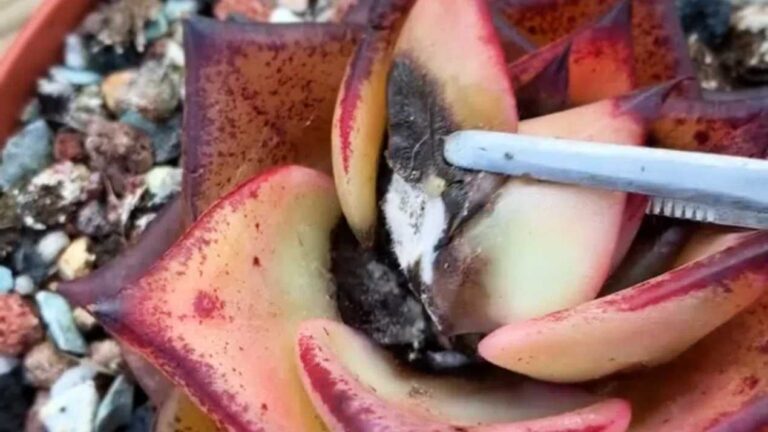Have you also experienced this kind of trouble? Obviously, you have carefully studied the succulent care tips and strictly follow the water control and sunshine methods, but your beloved succulents still die in just a few weeks. As a senior succulent caregiver with 5 years of experience, I must tell you: 90% of newbie problems stem from these 7 fatal succulent care misunderstandings. This article will provide you with a detailed analysis of the real causes of succulent death and proven solutions to help you successfully avoid these newbie traps and keep your succulents healthy.
Myth 1: The trap of choosing expensive varieties
Many newbies are misled by the “scarcity is expensive” mindset and prioritize the selection of expensive and rare varieties. This kind of succulent is usually divided into two kinds: genetically rare primitive species (such as some species of the genus Agave) and artificially cultivated state strain. The former requires special environmental care, and the latter is highly susceptible to discoloration and death after a change in the growing environment.
It is recommended to start with generic varieties, such as Sedum Chihuahua and Rainbow Jade, which are affordable (usually $3-8) and resilient enough to help you gain real-world experience. Remember: care experience is more important than the price of the plant!
Myth 2: Implementing Nutrient Control Strategies Too Early
70% of newbies mistakenly start controlling water when they are first potted. Succulent roots need 15-20 days of adaptation, when the potting soil should be kept slightly damp (30%-40% humidity). Controlling water too early will cause the root system to fail to develop. It is recommended to use transparent seedling pots to observe the rooting situation.
Correct practice: Place in bright diffused light after potting and keep the soil slightly moist for the first 3 weeks. When new leaf growth is observed (usually when the 4th new leaf unfolds), gradually increase the light intensity and the frequency of water control.
Myth 3: The disaster of insufficient indoor lighting
Succulents need 4-6 hours of direct light per day, and desk illumination (usually <1000lux) is far below the needs. Experimental proof: in 2000lux environment maintenance 30 days, succulent futile growth rate as high as 83%.
Solution: Use full spectrum plant fill light (recommended wavelength 400-700nm) for 6-8 hours per day. South facing windowsill is the best choice, east and west facing need extra supplemental light, north facing is not recommended to maintain succulent.
Myth 4: The Deadly Temptation of Overwatering
65% of succulent deaths stem from improper watering. Remember this golden rule: water when the bottom 2-3 pairs of leaves are slightly wrinkled (about 3-5 days after the potting soil is completely dry). In summer, use the “soaking method” and in winter, switch to using a spiked pot to water along the sides of the pot.
Advanced tip: Prepare a bamboo skewer by inserting it into the bottom of the pot and pulling it out to observe the humidity. If the bamboo stick is completely dry and free of moisture, you can water. Watering frequency in spring and fall is usually 10-15 days/times.
Myth 5: Consequences of wrong use of raw soil
Raw soil is too water-retentive (water content > 60%) and is highly susceptible to root rot. It is recommended to use 70% granular soil + 30% peat ratio, particle diameter 2-4mm is the best. A 1:1:1 mix of volcanic rock, myrmecite and terracotta provides ideal permeability.
IMPORTANT: Always trim the roots when potting up a new plant! Cut off the black, dry, hairy roots and leave the main roots 3-5cm long, and let them dry for 24-48 hours before potting to prevent bacterial infections.
Myth 6: The disaster of blind fertilization
Succulents have a very low fertilizer requirement, and over-fertilizing (EC > 1.2mS/cm) can lead to salt accumulation. It is recommended to use 2000 times diluted balanced fertilizer (NPK 10-10-10) once a month in spring and fall. Remember: Avoid direct light for 48 hours after fertilizer application!
Special warning: Never use homemade food waste fertilizer! Unfermented organic matter can change the soil pH (usually dropping below 5.0) and cause root burn.
Myth 7: The dangers of superstitious quick fixes
Those recipes (onion juice, carrot juice, etc.) that claim “7 days out of the state” contain a lot of sugar, which will attract fungi and pests. It is scientifically proven: the three elements of succulent coloring are temperature difference (day and night temperature difference ≥10℃), light intensity (≥20,000lux) and moderate water control.
Old stump cultivation requires patience, through 3-5 years of natural growth, together with regular pruning of the bottom leaves (once a year in spring and fall), in order to obtain a healthy and beautiful lignified stem. Any artificial means of aging will result in weak and fragile stems.
Remember these core principles of succulent care: patient observation, precise intervention, and moderate maintenance. It is recommended that novices establish a maintenance log to record each watering, fertilization and status changes. As long as you avoid these 7 major misconceptions and cooperate with scientific methods, even the most common varieties can be raised in stunning condition. Start adjusting your care strategy now and witness the transformation journey of succulents!





